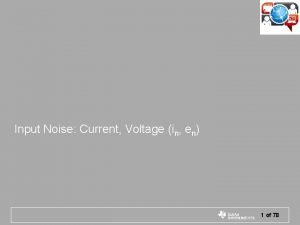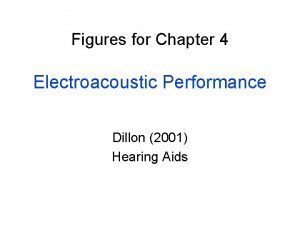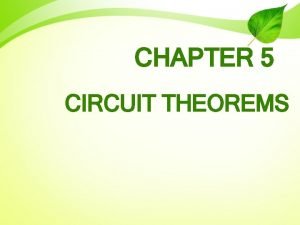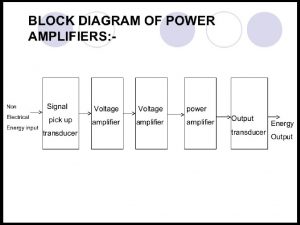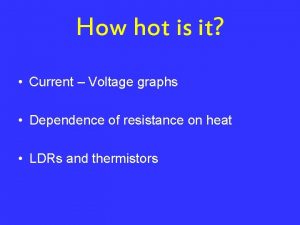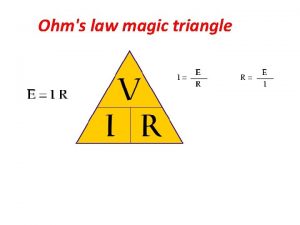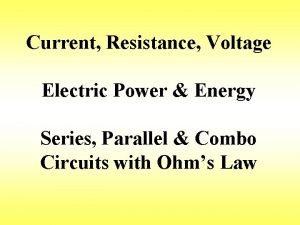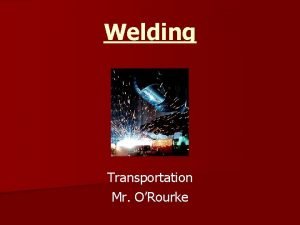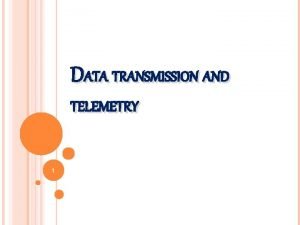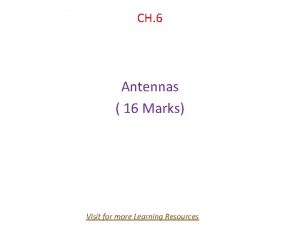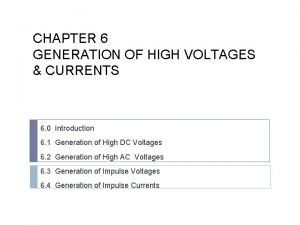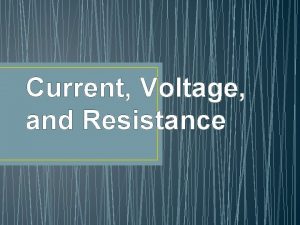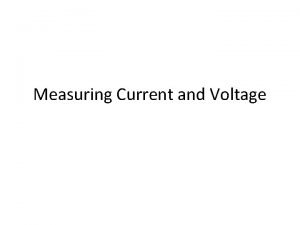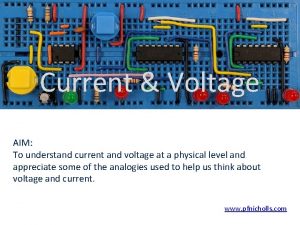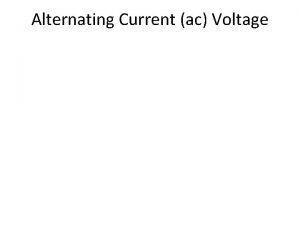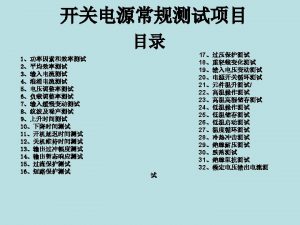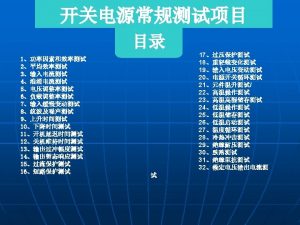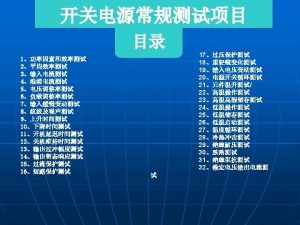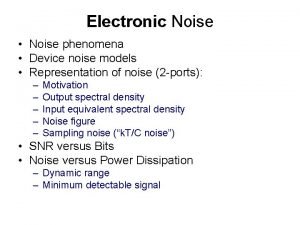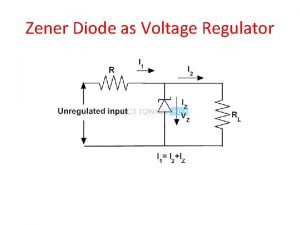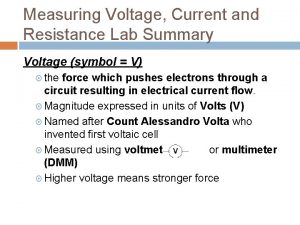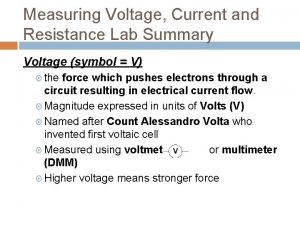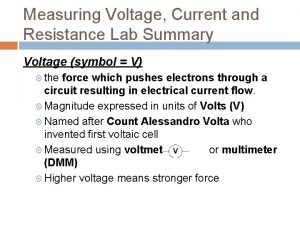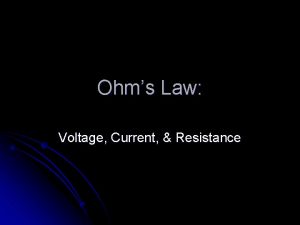Input Noise Current Voltage in en 1 of






![1/f Noise Equation e 1/f@1 Hz = (e 1/f@f)(√[f]) where: e 1/f@1 Hz = 1/f Noise Equation e 1/f@1 Hz = (e 1/f@f)(√[f]) where: e 1/f@1 Hz =](https://slidetodoc.com/presentation_image/6a91f2b348163555e4a074c5f28e5324/image-7.jpg)











- Slides: 18

Input Noise: Current, Voltage (in, en) 1 of 78

Op Amp Noise Model (IN+ and IN- are not correlated) OPA 277 Data VN IN+ IN- Tina Simplified Model VN IN 2 of 78

Understanding The Spectrum: Total Noise Equation (Current or Voltage) en. T = √[(en 1/f)2 + (en. BB)2] where: en. T = Total rms Voltage Noise in volts rms en 1/f = 1/f voltage noise in volts rms en. BB = Broadband voltage noise in volts rms 3 of 78

Real Filter Correction vs Brickwall Filter where: f. P = roll-off frequency of pole or poles f. BF = equivalent brickwall filter frequency 4 of 78

AC Noise Bandwidth Ratios for nth Order Low-Pass Filters BWn = (f. H)(Kn) Effective Noise Bandwidth Real Filter Correction vs Brickwall Filter Number of Poles in Filter Kn AC Noise Bandwidth Ratio 1 1. 57 2 1. 22 3 1. 16 4 1. 13 5 1. 12 5 of 78

Broadband Noise Equation e. BB BWn = (f. H)(Kn) where: BWn = noise bandwidth for a given system f. H = upper frequency of frequency range of operation Kn = “Brickwall” filter multiplier to include the “skirt” effects of a low pass filter en. BB = (e. BB)(√[BWn]) where: en. BB = Broadband voltage noise in volts rms e. BB = Broadband voltage noise density ; usually in n. V/√Hz BWn = Noise bandwidth for a given system 6 of 78
![1f Noise Equation e 1f1 Hz e 1fff where e 1f1 Hz 1/f Noise Equation e 1/f@1 Hz = (e 1/f@f)(√[f]) where: e 1/f@1 Hz =](https://slidetodoc.com/presentation_image/6a91f2b348163555e4a074c5f28e5324/image-7.jpg)
1/f Noise Equation e 1/f@1 Hz = (e 1/f@f)(√[f]) where: e 1/f@1 Hz = normalized noise at 1 Hz (usually in n. V) e 1/f@f = voltage noise density at f ; (usually in n. V/√Hz) f = a frequency in the 1/f region where noise voltage density is known en 1/f = (e 1/f@1 Hz)(√[ln(f. H/f. L)]) where: en 1/f = 1/f voltage noise in volts rms over frequency range of operation e 1/f@1 Hz = voltage noise density at 1 Hz; (usually in n. V) f. H = upper frequency of frequency range of operation (Use BWn as an approximation for f. H) f. L = lower frequency of frequency range of operation 7 of 78

Example Noise Calculation Given: OPA 627 Noise Gain of 101 Find (RTI, RTO): Voltage Noise Current Noise Resistor Noise 8 of 78

Voltage Noise Spectrum and Noise Bandwidth 50 n. V/rt-Hz 5 n. V/rt-Hz Unity Gain Bandwidth = 16 MHz Closed Loop Bandwidth = 16 MHz / 101 = 158 k. Hz 9 of 78

Example Voltage Noise Calculation: Broadband Voltage Noise Component: BWn ≈ (f. H)(Kn) (note Kn = 1. 57 for single pole) BWn ≈ (158 k. Hz)(1. 57) =248 k. Hz en. BB = (e. BB)(√BWn) en. BB = (5 n. V/√Hz)(√ 248 k. Hz) = 2490 n. V rms 1/f Voltage Noise Component: e 1/f@1 Hz = (e 1/f@f)(√f) e 1/f@1 Hz = (50 n. V/√Hz)(√ 1 Hz) = 50 n. V en 1/f = (e 1/f@1 Hz)(√[ln(f. H/f. L)]) Use f. H = BWn en 1/f = (50 n. V)(√[ln(248 k. Hz/1 Hz)]) = 176 n. V rms Total Voltage Noise (referred to the input of the amplifier): en. T = √[(en 1/f)2 + (en. BB)2] en. T = √[(176 n. V rms)2 + (2490 n. V rms)2] = 2496 n. V rms 10 of 78

Example Current Noise Calculation Note: This example amp doesn’t have 1/f component for current noise. en-in= (in)x(Req) en-out= Gain x (in)x(Req) 11 of 78

Example Current Noise Calculation Broadband Current Noise Component: BWn ≈ (f. H)(Kn) BWn ≈ (158 k. Hz)(1. 57) =248 k. Hz in. BB = (i. BB)(√BWn) in. BB = (2. 5 f. A/√Hz)(√ 248 k. Hz) = 1. 244 p. A rms Req = Rf || R 1 = 100 k || 1 k = 0. 99 k eni = (In)( Req) = (1. 244 p. A)(0. 99 k) = 1. 23 n. V rms neglect Since the Total Voltage noise is envt = 2496 n. V rms the current noise can be neglected. 12 of 78

Resistor Noise – Thermal Noise The mean- square open- circuit voltage (e) across a resistor (R) is: en = √ (4 k. TKRΔf) where: TK is Temperature (ºK) R is Resistance (Ω) f is frequency (Hz) k is Boltzmann’s constant (1. 381 E-23 joule/ºK) en is volts (VRMS) To convert Temperature Kelvin to TK = 273. 15 o. C + TC 13 of 78

Resistor Noise – Thermal Noise en density = √ (4 k. TKR) n. V/rt-Hz Noise Spectral Density vs. Resistance (Ohms) 14 of 78

Example Resistor Noise Calculation enr = √(4 k. TKRΔf) where: R = Req = R 1||Rf Δf = BWn enr = √(4 (1. 38 E-23) (273 + 25) (0. 99 k)(248 k. Hz)) = 2010 n. V rms ( (0. 99 k)( en-in= √(4 k. TRΔf) en-out= Gain x (√(4 k. TRΔf)) f) 15 of 78

Total Noise Calculation Voltage Noise From Op-Amp RTI: env = 2510 n. V rms Current Noise From Op-Amp RTI (as a voltage): eni = 1. 24 n. V rms Resistor Noise RTI: enr = 2020 n. V rms Total Noise RTI: en in = √((2510 n. V)2 + ((1. 2 n. V)2 + ((2010 n. V)2) = 3216 n. V rms Total Noise RTO: en out = en in x gain = (3216 n. V)(101) = 325 u. V rms 16 of 78

Calculating Noise Vpp from Noise Vrms Relation of Peak-to-Peak Value of AC Noise Voltage to rms Value Peak-to-Peak Amplitude Probability of Having a Larger Amplitude 2 X rms 32% 3 X rms 13% 4 X rms 4. 6% 5 X rms 1. 2% 6 X rms * 0. 3% 6. 6 X rms 0. 1% *Common Practice is to use: Peak-to-Peak Amplitude = 6 X rms 17 of 78

Voltage Noise (f = 0. 1 Hz to 10 Hz) Low Frequency Low frequency noise spec and curve: Over specific frequency range: 0. 1 Hz < f < 10 Hz Given as Noise Voltage in pp units Measured After Bandpass Filter: 0. 1 Hz Second−Order High−Pass 10 Hz Fourth−Order Low−Pass 18 of 78
 Noise
Noise Voltage noise 50low
Voltage noise 50low Single phase full wave ac voltage controller with rl load
Single phase full wave ac voltage controller with rl load Line current and phase current
Line current and phase current Convert rms to peak to peak voltage
Convert rms to peak to peak voltage High voltage technology
High voltage technology What is the objective of earthing or grounding
What is the objective of earthing or grounding Equivalent input noise
Equivalent input noise Source transformation theorem
Source transformation theorem Difference between voltage and current
Difference between voltage and current Ohmic conductor graph
Ohmic conductor graph Defines ohm's law
Defines ohm's law Series vs parallel circuit
Series vs parallel circuit Mulitpler
Mulitpler Mig welding voltage chart
Mig welding voltage chart Introduction to telemetry
Introduction to telemetry Current and voltage distribution in antenna
Current and voltage distribution in antenna Generation of high dc voltage
Generation of high dc voltage Energy from voltage and current
Energy from voltage and current

